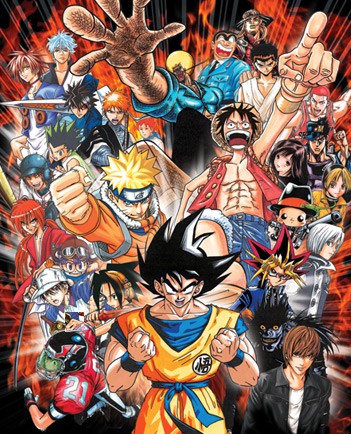The Art of Anime Cartoons

If you’re like most kids, you love watching cartoons. Bugs Bunny, Elmer Fud, Roadrunner, Wile E. Coyote, SpongeBob SquarePants, and Pokémon are just a few of the many favorites. You may have also heard of Dragon Ball Z or Pokemon. Anime cartoons have their own sense of style that many kids enjoy. Read on to learn more about the art of anime cartoons!
Anime is a form of animation
Anime is a term used to describe Japanese cartoons. While this term is not a translation of the English word, it is the way the Japanese speak. Anime is a form of animation that incorporates elements of science and fantasy in its storytelling and design. Originally from Japan, anime has gained a global following and has been translated into a variety of languages. It is the most popular form of animation in Japan and is the reason why a whole generation of viewers grew up watching anime.
Anime has many distinct styles. Full-animation uses 12 to 18 images per second for smooth motion. Limited-animation uses fewer frames. To reduce the time and cost of production, 3D studios often use a three-frame technique. In-between animators work on the frames that fall between key frames. Composing involves coloring and shading the frames. Sound effects also play an important role in the production of anime.
Anime is a form of satire
Although anime is primarily known for its innovations in animation, action, and romance, it has a surprisingly high degree of satire. Anime is often criticized for its parodies, which are typically quite hilarious. These parodies often criticize politics, culture, and other current topics. But how does anime use satire to be funny? Here are three examples of anime that use satire.
Cartoons usually have a satirical theme, though they’re often aimed at children. While the word “cartoon” originally referred to a caricature, it has since come to mean anything that isn’t true or absurd. Anime, on the other hand, focuses on broader life issues, with more violent or sexual themes. In some cases, satire is an important part of the story, but the point is still to make viewers laugh.
Anime is intended to induce laughter
While most Japanese animation is aimed at generating laughter, some anime is geared more toward sadness. Dragon Ball Z is one of the most popular and hilarious anime series. There is no overall plot, and there are over 250 episodes. Although aimed at the Japanese audience, it is still popular around the world. Anime cartoons are a way to escape the squalor of everyday life. Many people watch anime as a form of self-expression, and many people are fascinated by its art form.
The facial expressions of most anime characters are far removed from reality. In particular, the facial expressions of angry or embarrassed characters show bulging veins. For example, a woman may summon a mallet out of nowhere. Male characters often develop bloody noses around their female love interests. Some of them even pull their eyelids down to reveal their bloody underside. Regardless of their similarities to the human body, they are designed to induce laughter.
Anime cartoons have a sense of style
Japanese animation is famous for the style and aesthetics it brings to their films, TV shows, and video games. The style of Japanese animation was first introduced to the world during WWII, when American servicemen stationed in Japan imported home movies of cartoons produced in Japanese movie theaters. While Japanese cartoons are usually regarded as Japanese animation, their influence is felt in many other media as well, including American cartoons such as Teen Titans and Cartoon Network shows.
In general, anime is more serious and mature than western cartoons. Anime often deals with adult themes, though it is not typically as dark as Western cartoons. The Japanese audience, however, views anime as being aimed at adults. Western cartoons may appeal to children and be deemed to be too childish by the average viewer. This is not to say that anime is inappropriate for all ages. Western cartoons and anime are meant for different audiences, but their style is largely the same.
Anime characters have large eyes
Many anime and manga characters have large eyes. Having large eyes in an anime or manga is helpful when trying to understand the emotions of a character. In Japanese culture, big eyes are considered aesthetically pleasing. Interestingly enough, some Japanese try to enlarge their eyes to look more like Westerners. Perhaps this is the reason for the stereotype? While some anime and manga characters have large eyes, the Japanese are generally known to be drawn to things that are different from their own.
Anime characters tend to have large eyes because humans have large, expressive eyes. This characteristic may relate to the kawaii culture that is prevalent in Japan. Anime and manga characters with large eyes can appeal to both the inner child in us and the adult audience. These large eyes also help to distance anime from realism and sex. In addition, anime and manga characters often have long hair and realistic-looking designs.
Anime characters have human facial expressions
Anime characters have very expressive eyes, and this is one of the most common aspects of their character design. Because anime is marketed at girls, many of the characters have large eyes. However, this style may be a product of the Japanese obsession with Western beauty standards. In fact, it may be the main factor that makes anime so realistic. Here are a few other ways that anime characters exhibit human facial expressions.
Anime often uses their faces to exaggerate emotions such as surprise or shock. For example, in the anime series Sekaiichi Hatsukoi, Ritsu shakes his head with blue lines across his face, which represent blood leaving his face. This reveals his confusion and is a common theme in anime. The facial expression of a character can also be increased by the background, with whooshing “speed lines” surrounding him.